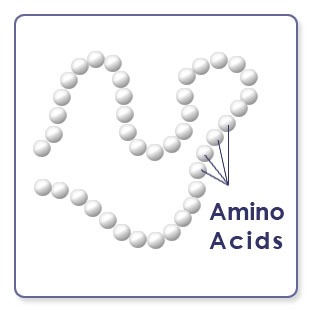Biology: Semester I |
|
| Sections: |
Introduction | Section 1 | Section 2 |
| Section Two: |
Biology: Chemistry of Life: Part Five 3. Proteins: 
Proteins are usually large molecules made up of smaller molecules called amino acids. Twenty different amino acids are found in proteins. Some amino acids are polar and others are nonpolar. Amino acids are linked together into polypeptide chains, the first level of protein structure and organization. Protein structure is determined by the sequence of amino acid types in a polypeptide chain. The sequence of amino acids is directly related to the sequence of information stored in the DNA that makes up the gene. Changes in the primary structure can alter the proper functioning of the protein. Protein function is usually tied to the protein’s three-dimensional shape. In biological systems, proteins act as control molecules and structural elements. The control functions of proteins are carried out by enzymes and protein-based hormones. Enzymes are chemicals that act as catalysts to change the rate of a chemical reaction. Structural proteins function in the cell membrane, muscle tissue, and other locations. A group of proteins known as collagens are present in a variety of locations, including the tendons, hide, and corneas of a person. Keratin is another structural protein that occurs in fingernails, feathers, hair, and rhinoceros horns. Microtubules, which are important in cell division and in maintaining the structures of flagella and cilia, are composed of globular structural proteins. So, protein is not just an item on a food label. Proteins are made according to directions, but just how do living things make these proteins?
| ||
|
© 2007 Aventa Learning. All rights reserved. |